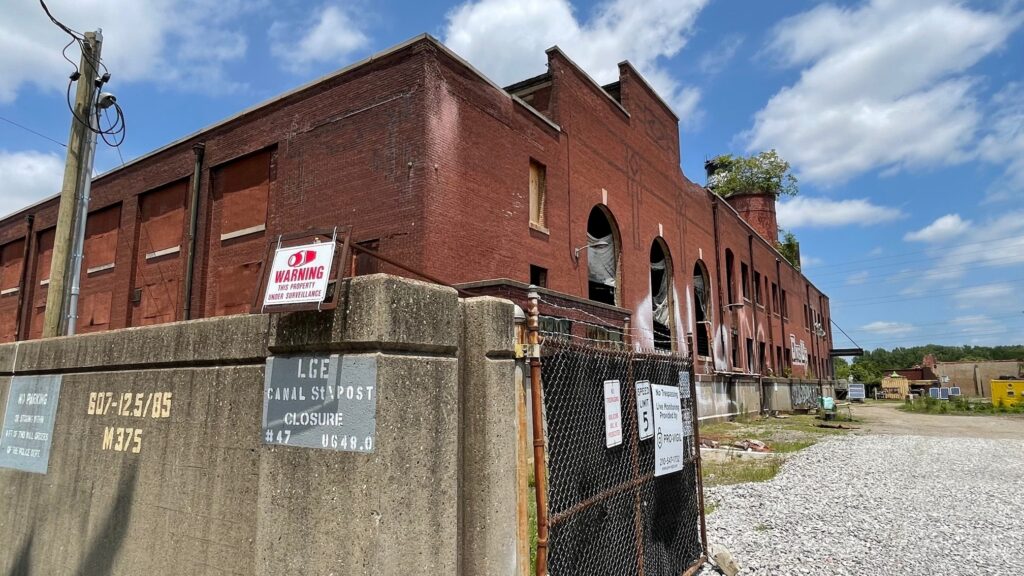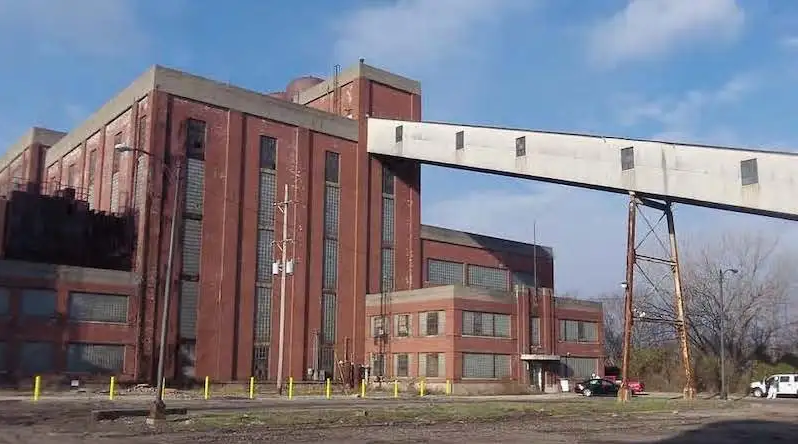Total Wrecking & Environmental prides itself on its industrial demolition expertise, demonstrated in three projects undertaken for the Louisville Gas & Electric (LG&E) power station in Kentucky.
These separate but equally complex projects included hazardous and PCB waste removal and surgical demolition tasks, each of which required a sophisticated understanding of industrial demolition processes. The successful execution of these highly-technical projects, all for the same client, is a testament to Total Wrecking & Environmental’s commitment to ensuring its clients experience minimal disruption and maximum satisfaction throughout the entire process.
Below, we’ve broken down each of these projects and job sites in Louisville, Kentucky that Total Wrecking has had the exciting privilege of working on over the last two years. Although they all fall within the greater LG&E umbrella, each project presented unique challenges for Total Wrecking’s expert demo team to identify, strategize, and ultimately overcome.
Canal Station
Canal Station is a coal-powered plant located within 200 feet of the rushing Ohio River. Total Wrecking completed this extremely sensitive and complex project, which required a long list of specialized crews and equipment to safely complete, in early 2022.
Canal Station was the most time-consuming and complex of the LG&E projects. For example, the basement underneath the turbines was approximately 50 feet deep, well below the water table and the river 200 feet away. All in all, this extensive project spanned nearly two years and required close coordination with the Army Corps of Engineers from top to bottom.
The Canal Station project had two massive and competing challenges, the first of which was widespread asbestos within effectively every part of the structure. The main structure had deteriorated over more than a decade, and asbestos had contaminated just about everything in its path. As with all projects, the entire building had to be decontaminated and remediated before any demolition work began.
Metal siding wrapped around the entire structure contained both PCBs and asbestos. All of Canal Station, for that matter, was contaminated inside, and surrounded by corrugated panels that contained both asbestos and PCBs.
The presence of asbestos meant that it was of crucial importance that any and all water was protected from contamination. That’s one thing when you’re 200 feet away from one of the biggest rivers in the country. It’s another thing when a massive flood wall system – including sheet piling filled with concrete, tunnels, and foundational walls – that extends up to 50 feet underground is already leaking and further deteriorating, threatening further intrusion.
Which brings us to challenge #2: the ever-present threat of water intrusion and complex water management. Throughout the asbestos abatement phase, Total Wrecking asbestos contractors had to ensure every drop of water was carefully protected from contamination. Anything that did come into contact with asbestos had to be filtered and discharged immediately, a constant throughout the entire project.
Being 200 feet from the Ohio River meant massive flood wall systems needed to be preserved, even though the river was actively attached to structures that TWE was demolishing. Upon TWE’s arrival onsite, there were already active water leaks in the tunnels, roof membranes, foundation walls, and other deteriorated areas, all of which needed to be filtered and discharged while preventing further contamination.
Divers on-site had to dredge out intake tunnels to construct bulkheads. Intake and discharge tunnels had to be filled with flowable fill to avoid flooding from the neighboring river. Tunnels that connected the river to these buildings had to be sealed to prevent water intrusion or flooding. There were also numerous cracks in the foundation and constant groundwater concerns that made water filtration management the biggest challenge of the whole project.
Once these demolition experts sealed walls, closed off tunnels, and plugged roof drains, they could move forward with abatement and PCB remediation.
The headlining structure for demolition was a massive power block with a four-turbine hydro or coal-powered generator and two large hung boilers. There was also a small screen house, a quonset hut, an electrical building, and specific floodwall sections that had to be carefully dismantled and removed.
The basement was later backfilled with imported tunnel stone and recycled concrete from the project. Around 95-96% of materials on Canal Station were recycled, less than TWE’s proud average of 98-99% in light of the heavy contamination.

Zorn
Total Wrecking and Environmental’s expert team of commercial demolition contractors spent several months demolishing a large turbine within an extremely limited space, requiring a multi-step process of removing the foundation and carefully dismantling a massive, multi-ton turbine.
The Zorn project, located immediately adjacent to a historical and iconic water tower owned and actively operated by the city’s water department, had a relatively small footprint compared to Canal Station.
Zorn is the water department’s main area of operation, and the turbine site was simply being leased from them by LG&E. This meant that the entire area around Zorn was fully operational, and that the historical water tower had to be very carefully preserved.
On top of that, the area surrounding the jobsite had just been freshly paved, which meant crews had to be very careful not to disrespect the plant’s proud cosmetic changes.
The main character in this demo was a large, single-engine turbine to be demolished both above and below grade, as well as its switchgear and an 80-foot transmission tower. The entire lot occupied no more than 1600 square feet, giving demo crews extremely limited space to work, on top of needing to be sensitive to active operations and water department heads working nearby.
Like most projects, Zorn included the removal of asbestos, PCB caulking, and PCB coating on wires throughout the site. Burners helped surgically dismantle the turbine, excavators helped clear the foundation beneath it, and managers helped ensure none of their precarious work interfered with the ongoing operations of the active plant.
There’s a twist though… that 80-foot transmission tower was literally bigger than the jobsite itself.
The jobsite occupied such a confined space that there was initially nowhere to fell the 80-foot transmission tower. As a result, demolition contractors first dismantled, demolished, and cleared the entire turbine and area immediately around it. Then, they felled the transmission tower right into the space they had been working in!
Talk about a tiny bullseye (and some serious demolition ingenuity) to get this job done safely and on time!
Their ability to conduct such an intricate task with impeccable results is a testament to Total Wrecking’s technical precision and excellence.

Paddy’s Run
Paddy’s Run was a sister unit to Zorn with the same type of turbine elsewhere on the LG&E plant. On paper the job was essentially the same, minus the transmission tower. Asbestos abatement and PCB removal also made appearances.
What makes Paddy’s Run unique is its location, which is inside an LG&E-owned facility that remained fully operational. LG&E operations weren’t on this active jobsite, per se, but remotely located across the plant and connected by an active switchyard . . . which was on the Paddy’s Run jobsite.
As a matter of fact, TWE was about 10 feet away from this active switchyard and its live buss. This meant there was a massive web of overhead electrical lines above many of the active work areas throughout the project.
The other curveball was the timeline. Just as TWE finished the Zorn project in October 2021, LG&E made the decision to demolish Paddy’s Run by the end of the year, which posed a huge financial update for them. By the time the project was negotiated and green lit at the end of October, TWE was ready to dive in the first week of November.
This obviously left very little time after required permits and notifications, and posed a time challenge that Total Wrecking refused to let interfere with safety or integrity. Leveraging sophisticated demo planning and coordination, TWE was able to complete the job from A to Z in 6 weeks, a full 3 weeks early from the already accelerated timeline.
The main project objective at Paddy’s Run is the removal of a massive combustion turbine that sits about 10 feet away from an active switchyard, an active electrical unit that each crew member needs to be acutely aware of at all times. Beyond that, the demolition of the turbine required careful dismantling and removal of each piece that was then shipped off-site.
Once the turbine was handled, the team moved on to dealing with the area around it. This meant removing the foundations, backfilling with stone or recycled concrete, and dealing with any other asset recovery or waste removal tasks around the turbine.
There were also separate air handling units (massive duct work, essentially) that was connected to the demolished unit, so these also needed to be carefully demolished.
All industrial demolition projects come with the challenge of managing large amounts of industrial scrap. In order to minimize environmental impact and make good use of any reusable or valuable elements, wire strippers remove all the reusable or valuable elements on-site, and any remaining steel is processed before being sorted for recycling.
These concerted efforts led to over 98% of all materials generated from demolition being recycled or reused.
Conclusion
Time and again, Total Wrecking proves why they’re one of the best in the business. With the utmost commitment to safety and integrity, people who work with have the peace of mind knowing they’re working with one of the most qualified, storied, and safest contractors anywhere in the U.S.
If you’re in need of an industrial demolition company, look no further than Total Wrecking & Environmental. We have extensive experience with projects of all sizes, as demonstrated by our work at the LG&E power station in Kentucky. Plus, we always put safety first. Contact us today to get started on your next industrial demolition project.


test